The Leeb hardness tester is a commonly used instrument for measuring the hardness of metallic materials, and it is based on the Leeb hardness test as its theoretical basis. Good portability and high detection efficiency are the features of this hardness tester. Whether in laboratories or the automotive industry, Leeb hardness testers play a significant role.
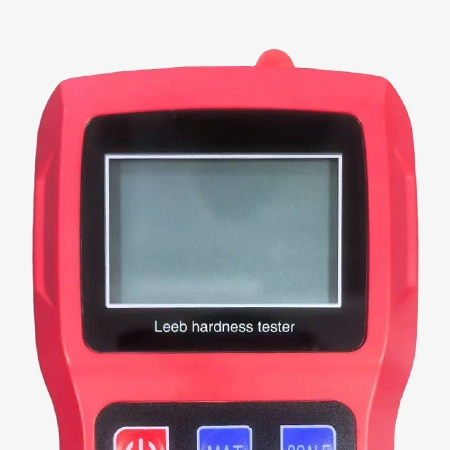
LCD Display
- An LCD display in Leeb hardness tester significantly enhances the user experience by providing clear, real-time readings of hardness values. Allowing operators to view results easily.
- With a user-friendly interface and clear visual guidance, even non-expert operators can perform hardness measurements quickly and accurately.
- The display typically shows multiple units of hardness (HRA, HRB, HRC, HB, HV, HS and HL), along with additional information like battery status.
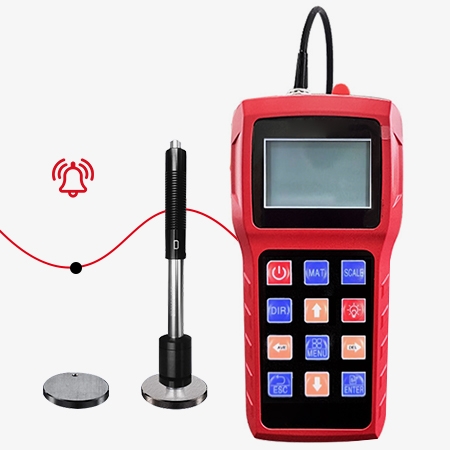
Upper and Lower Limit Alarm Function
- The upper and lower limit alarm function in the Leeb tester adds great convenience for quality assurance. Users can pre-set acceptable hardness ranges according to specific standards or product requirements. When the measured value exceeds or falls below these limits, the tester automatically triggers a visual or audible alarm.
- Human error is one of the most common causes of inaccurate quality assessment. Even experienced technicians can misread or overlook a hardness value when performing hundreds of tests in a day. The automatic alarm system eliminates this risk by providing an unmistakable signal whenever a measurement is outside the preset range.
Applications
Leeb hardness testers are widely used for on-site hardness testing of large and heavy metal parts. Their primary application is in quality control and maintenance across various industries, including manufacturing, automotive, shipbuilding, and power generation. They are especially useful for testing hard-to-move components like large castings, forgings, shafts, pressure vessels, and welded structures.

Shipbuilding Industry
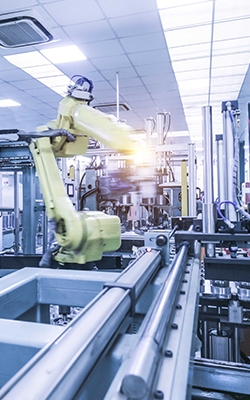
Manufacturing Industry
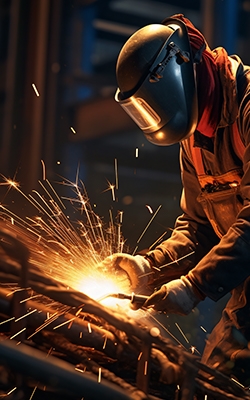
Metal Processing

Automotive Industry
| Model | SISCO-HT-XH910 |
| Measurement Range | (170~960)HLD, (19~651)HB, (13.5~101.7)HRB, (17.9~69.5)HRC, (59.1~88)HRA, (80~1042)HV, (30.6~102.6)HS |
| Measurement Direction | 360° |
| Hardness Scale | HL, HB, HRA, HRB, HRC, HV, HS |
| Measurable Material | Steel and cast steel, alloy tool steel, stainless steel, grey cast iron, ductile cast iron, cast aluminum alloy, copper and zinc alloy, copper and tin alloy, pure copper |
| Upper and Lower Limit Setting Range | (170-960)HLD |
| Data Storage | Max 600 groups (number of shocks 32~1) |
| Display | LCD display |
| Power Supply | 2*AA battery (not included) |
| Shell Material | ABS |
| Operating Temperature | -10 ℃~55 ℃ |
| Storage Temperature | -20 ℃~75 ℃ |
| Relative Humidity | ≤90% |
| Dimension | 154*64mm (main unit) |
| Weight | About 4.25kg (a whole set) |
Dimension:
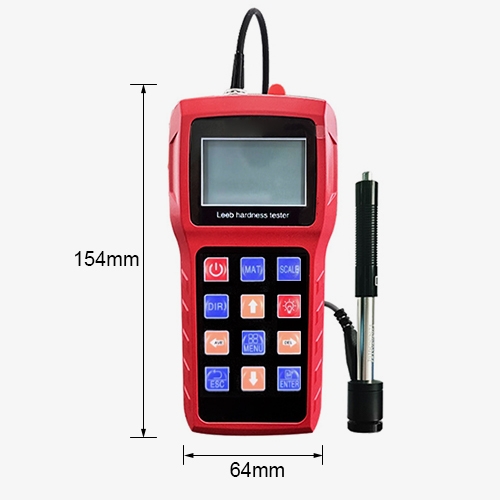
Q1: What is Leeb hardness tester?
A1: A Leeb hardness tester is a portable device used to measure the hardness of metals and alloys by the Leeb rebound principle. It operates by releasing a standardized impact body against the test surface and measuring the rebound velocity.
Q2: What does the Leeb hardness value (HL) represent?
A2: The Leeb hardness value (HL) represents a measure of a material's surface hardness based on the rebound principle. It is determined by the Leeb hardness test, where a small, hard impact body is propelled against the test material’s surface. The device measures the velocity of the impact body both before and after striking the surface. The Leeb hardness value is calculated from the ratio of the rebound velocity to the impact velocity, multiplied by 1000, and is expressed in HL (Hardness Leeb) units.
Q3: What materials can be tested using a Leeb hardness tester?
A3: A Leeb hardness meter is primarily used to measure the hardness of metallic materials. It is suitable for testing metals such as steel, cast iron, cast steel, stainless steel, and various alloys.
Tips: What is the operating temperature range of this portable Leeb hardness tester?
The operating temperature range of a portable Leeb hardness tester typically falls between -10 ℃ to 55 ℃, ensuring accurate and stable measurement performance in most industrial environments. Within this range, the tester can reliably measure the hardness of metals without being affected by temperature-induced material expansion or electronic drift. Additionally, storage temperatures are often broader, typically from -20 ℃ to 75 ℃, to accommodate transport and warehouse conditions. Users should also avoid using the device in environments with high humidity, condensation, or direct sunlight, as these factors may interfere with the electronics of the Leeb tester.
Thank you for buying industrial test and measurement equipment on SISCO.com, all products sold by SISCO and the partner cover a 12 months warranty, effective from the date of receiving the products.
What is covered?
SISCO is responsible for providing free spare parts, and free technical support to assist the customer to repair the defective products until the problem is solved.
What is not covered?
- Product purchased from anyone other than a SISCO store or a SISCO authorized reseller.
- Expendable parts.
- Routine cleaning or normal cosmetic and mechanical wear.
- Damage from misuse, abuse or neglect.
- Damage from use of parts other than SISCO approved.
- Damage from use outside the product’s usage or storage parameters.
- Damage from use of parts not sold by SISCO.
- Damage from modification or incorporation into other products.
- Damage from repair or replacement of warranted parts by a service provider other than a SISCO authorized service provider.
- Damage caused by the application environment not meeting the product usage requirements and the failure to perform preventive maintenance.

